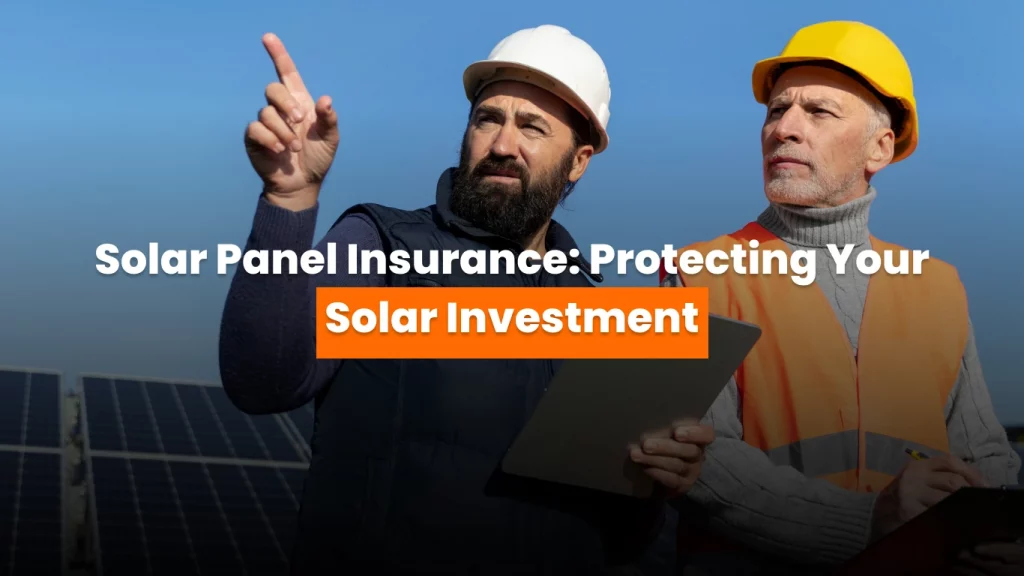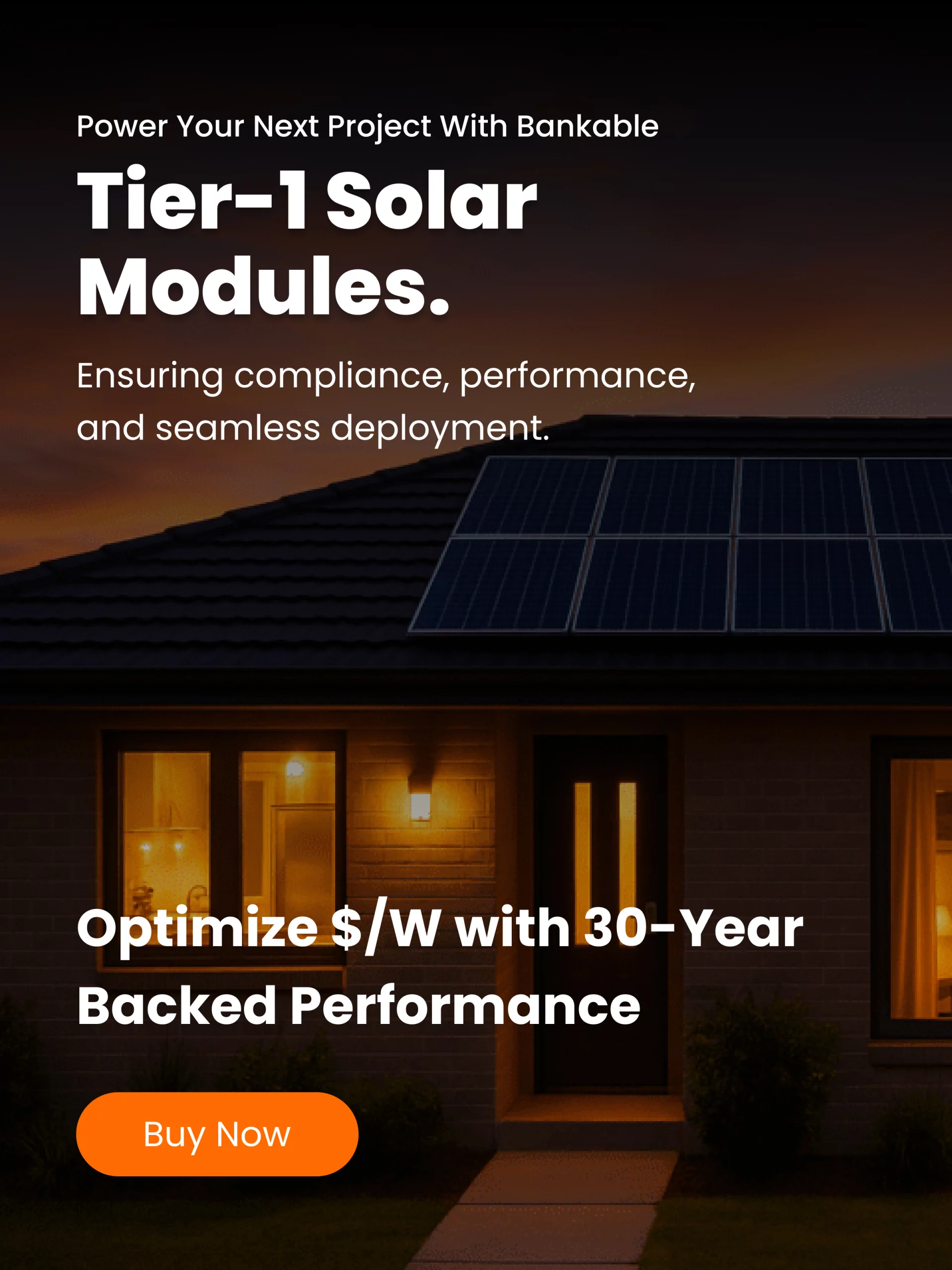Solar Panel Insurance : Making the switch to solar is a big decision, both financially and environmentally. On average, a residential solar system in the U.S. costs anywhere from $15,000 to $30,000 after tax incentives. For many homeowners, that’s one of the largest investments after purchasing the home itself. With such a big financial commitment, it’s natural to ask: what protects my solar panels if something goes wrong?
From hailstorms and hurricanes to theft or unexpected equipment failures, risks exist even though solar systems are built to last 25 years or more. Insurance can help offset those risks, but many homeowners are unclear on whether their panels are automatically covered by homeowners insurance or if they need a separate policy. Let’s break it all down in detail.
Are solar panels covered by homeowners insurance?
In most cases, yes, rooftop solar panels are protected by standard homeowners insurance because they’re considered a permanent fixture of the home, much like your roof or siding. That means if your solar system is damaged by:
- Fire or lightning
- Windstorms or hail
- Vandalism or theft
- Falling objects like tree limbs
…then your existing policy typically steps in.
However, coverage depends on the details of your policy and your insurance provider’s rules. For example, while one company might treat panels as part of the dwelling, another might only cover them under “other structures” coverage, which usually has lower payout limits. This is why it’s essential to review your policy closely and ask your insurer how they classify solar.
What if you have ground-mounted or detached systems?
Not all solar setups are the same. Many people install ground-mounted solar panels on poles or racks in their backyard, or even on detached garages or sheds. In these cases, insurers may not treat the system as part of your dwelling. Instead, they fall under the category of “other structures,” which usually has coverage limits between 10–20% of your dwelling’s insured value.
This is where problems can arise. If your $20,000 ground-mounted system is only protected up to $10,000, you’ll face a gap if the whole system needs replacing after a storm. To solve this, you can:
- Add an endorsement (rider) to increase limits.
- Purchase separate solar panel insurance tailored to your setup.
Both options ensure your coverage matches the actual value of your solar investment.
Will solar panels raise your insurance premium?
Because solar panels increase the replacement value of your home, premiums often rise after installation. Industry data suggests increases of 10–20% are common. While that sounds like a downside, there’s good reason: higher premiums mean your coverage limits have been adjusted so your insurer will cover the cost of replacing your entire system if needed.
Here’s a real-world example: If your home is insured for $250,000 and you add a $25,000 solar system, your insurer may raise your dwelling coverage to $275,000. This ensures that in a worst-case scenario, like a fire that destroys your house, you’ll be compensated for both the home and the solar system.
Failing to notify your insurance company could leave you underinsured, meaning you’d be responsible for replacing your panels out-of-pocket.
Insurance versus warranties: what’s the difference?
One common misconception is that solar panel warranties act like insurance. They don’t. Here’s how they differ:
- Product warranty: Covers defects in manufacturing or materials (usually 10–12 years).
- Performance warranty: Guarantees panels won’t degrade beyond a certain percentage (like 80% of output after 25 years).
- Installer warranty: Covers workmanship errors, like faulty wiring, usually 1–10 years.
These warranties do not cover external risks like storm damage, fire, or theft that’s where insurance comes in. To be fully protected, you need both: warranties to cover equipment flaws, and insurance to guard against outside threats.
Extreme weather and why insurance matters
Solar panels are built to withstand the elements, but extreme weather is a growing concern. Panels are tested to handle hailstones up to 1 inch at high speeds, yet massive hailstorms, especially in states like Texas, Colorado, and Kansas, can overwhelm those protections.
In fact, hail damage has become one of the leading causes of solar insurance claims. Since most warranties exclude hail, insurance is your only safety net. A single severe storm could crack multiple panels, leading to thousands of dollars in repair or replacement costs.
Similarly, hurricanes and tornadoes can cause roof damage that impacts the panels. Insurance protects not only the panels but often helps cover roof repairs as well, provided the policy is comprehensive.
Types of solar insurance options
Depending on your system size, location, and setup, there are different levels of insurance you can consider:
- Standard homeowners coverage – Best for rooftop panels in low-risk areas. Already included in most policies.
- Policy riders (endorsements) – Add-on coverage that boosts payout limits, useful for ground-mounted or large systems.
- Standalone solar panel insurance – Specialized coverage for solar systems, sometimes offered by solar installers or third-party providers. May also include services like monitoring, maintenance, or extended weather protection.
- Commercial and farm solar insurance – For large systems, like agricultural or business installations, policies may include construction coverage, equipment breakdown, and income-loss protection.
Tips to maximize your solar protection
- Tell your insurer early – Notify them before or right after installation. This prevents coverage gaps.
- Document your system – Keep receipts, installation records, and photos to support future claims.
- Add battery storage to your coverage – If you have a solar-plus-battery system, confirm that the battery is included in your policy.
- Maintain your system – Keep panels clean and schedule inspections to reduce the risk of damage that could void coverage.
- Prepare for wildlife issues – Birds or rodents nesting under panels can cause wiring damage. Some policies exclude this unless you take preventive measures like installing critter guards.
The bottom line
So, is solar panel insurance worth it? Absolutely. While your standard homeowners policy will usually cover rooftop panels, ground-mounted systems or setups in extreme weather regions often need extra protection. Insurance costs may rise slightly, but the peace of mind of knowing your $20,000–$30,000 investment is fully protected is well worth it.
Pairing insurance with strong manufacturer warranties gives you a safety net from both internal and external risks, ensuring your solar system delivers clean power for decades without leaving you exposed financially.
By preparing ahead of time, asking the right questions, and updating your coverage as your system evolves, you can rest easy knowing your investment, and your future energy savings, are well protected.




